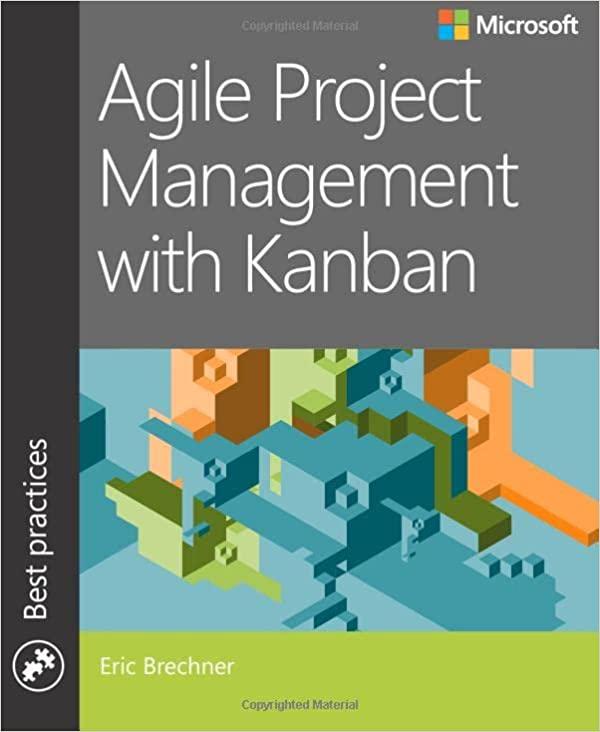Question
Read the The Stuart Injection Molding Company Case and answer the two question below Based on this information, what would you recommend to the company?
Read the The Stuart Injection Molding Company Case and answer the two question below
Based on this information, what would you recommend to the company?
Specifically on their process management activities, note any additional information that you might need.
Stuart Injection Molding Company (SIMC) is a small business that specializes in custom plastic molding for many different industries, including appliances and various consumer products such as toys. Adele Stuart, daughter of the company's founder and current CEO wishes to expand into the automotive sector. However, she realizes that to do so will require more formalized systems and eventually ISO 9000 registration. Although many basic procedures for assuring quality are in place, most have been conducted informally, and the company never compiled a formal quality manual that documents the system and outlines specific responsibilities for managers and workers. Recognizing the lack of a manual as a major deficiency, they called you in as a consultant to help. After spending some time in the plant talking with many employees, you jotted down several notes and observations:
The plant manager (PM) is responsible for ensuring the success of the quality management system by providing the necessary resources and reviewing system performance. However, SIMC has a quality assurance (QA) department that is responsible for the majority of implementation issues, such as maintaining measuring and test equipment, verifying process capability, performing inspection, selecting methods for monitoring process performance, and auditing the system.
All functional departments recognize their responsibility for quality planning and producing high-quality products. For example, the marketing and sales department conducts market research to understand customer needs and handles customer complaints; the project engineering department performs design reviews; the manufacturing department conducts in-process inspection for the purpose of maintaining control and coordinates continuous improvement processes. Maintenance, supplier relations, receiving, and human resources departments support these functions.
Most products are custom-designed with the customer. When a new job is contracted, a cross-functional team is selected that includes members from project engineering, quality assurance, manufacturing, and sales. This team develops all the specifications to ensure that design meets customer requirements and can be made according to these requirements, selects materials and process tolerances, determines production routings and inspection plans, develops a production control plan and measurement system, and monitors a trial production run. The customer must approve all design changes.
The company uses a variety of contemporary tools to simplify and optimize the product while also focusing on reducing production cost and waste. These toolsinclude quality function deployment, geometric dimensioning and tolerancing, design for manufacturing and assembly, value engineering, design of experiments, failure mode and effects analysis, and cost/performance/risk analysis.
Inspection is routine during the production process. QA lab personnel perform all phases of inspection and testing. Production operators use a "first-piece" inspection process to validate the start-up for a new product. Receiving inspection is performed on material, purchased parts, and subassemblies used in processing, manufacturing, and assembly. Operators also perform in-process inspections during production and final inspection on finished products. When contractually required, statistical process control techniques are used to ensure control of key process characteristics. Gauging instruction sheets are maintained by QA for at least one year.
Nonconforming products are labeled with a "Do Not Use" tag and kept from being shipped. This tag describes the nonconformance, documents the disposition decision, and records the reinspection results. If they are repaired or reworked, they are reinspected. Products that do not fully comply with specific requirements are not shipped without customer authorization. When nonconformities are detected, a cross-functional team investigates them and corrective actions are initiated to prevent their recurrence.
SIMC has a continuous improvement philosophy that pervades the entire organization. Processes are improved beyond minimum requirements when further improvements benefit customers. Quality performance and productivity are continuously monitored to identify opportunities for improvement. Everyone in the organization is encouraged to come forward with ideas for improving products, processes, systems, and productivity within the working environment. Some examples of opportunities for quality and productivity improvement are the reduction of cycle times, less scrap, rework and repair rates, less unscheduled machine downtime, and process performance variation.
Step by Step Solution
There are 3 Steps involved in it
Step: 1

Get Instant Access to Expert-Tailored Solutions
See step-by-step solutions with expert insights and AI powered tools for academic success
Step: 2

Step: 3

Ace Your Homework with AI
Get the answers you need in no time with our AI-driven, step-by-step assistance
Get Started


